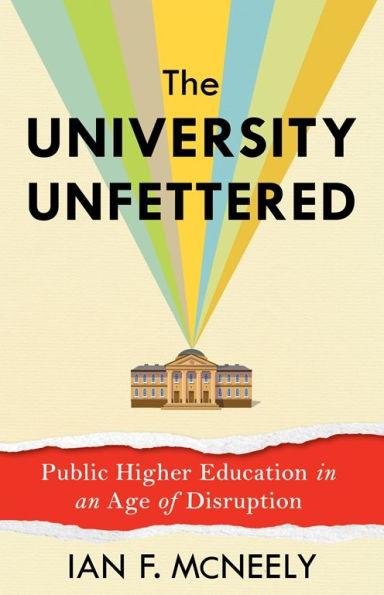The public university as we once knew it is gone and never coming back. After generations of fickle state support, public universities behave more and more like their private counterparts—charging what the market will bear, offering what consumers demand, competing relentlessly with peers, and managing their own priorities. But looking back on how we got here offers surprising reassurance. U.S. public universities emerged largely intact after a decade of disruption bookended by a financial crisis and a pandemic. Resisting widespread calls for corporate reinvention or “disruptive innovation,” they hewed to their core missions. If anything, exposure to the rigors of competition only enhanced their longstanding commitments to the public good.
The University Unfettered tells the story of a single public research university that was a generation ahead of its peers in repositioning itself for an independent future. It answers eight fundamental questions about how any contemporary university balances competing missions—questions about how money is spent, how education and knowledge are pursued, and how decisions get made. Each chapter blends deeply informed reconstruction of strategic decisions at one university with concise analyses of the entire sector. An unparalleled account of how a typical public university really works, this book makes a timely and distinctive case for the nonelite institutions that educate the vast majority of America’s college students. Rebutting critiques from both left and right, it offers a refreshingly optimistic outlook on higher education today.
1146411717
The University Unfettered tells the story of a single public research university that was a generation ahead of its peers in repositioning itself for an independent future. It answers eight fundamental questions about how any contemporary university balances competing missions—questions about how money is spent, how education and knowledge are pursued, and how decisions get made. Each chapter blends deeply informed reconstruction of strategic decisions at one university with concise analyses of the entire sector. An unparalleled account of how a typical public university really works, this book makes a timely and distinctive case for the nonelite institutions that educate the vast majority of America’s college students. Rebutting critiques from both left and right, it offers a refreshingly optimistic outlook on higher education today.
The University Unfettered: Public Higher Education in an Age of Disruption
The public university as we once knew it is gone and never coming back. After generations of fickle state support, public universities behave more and more like their private counterparts—charging what the market will bear, offering what consumers demand, competing relentlessly with peers, and managing their own priorities. But looking back on how we got here offers surprising reassurance. U.S. public universities emerged largely intact after a decade of disruption bookended by a financial crisis and a pandemic. Resisting widespread calls for corporate reinvention or “disruptive innovation,” they hewed to their core missions. If anything, exposure to the rigors of competition only enhanced their longstanding commitments to the public good.
The University Unfettered tells the story of a single public research university that was a generation ahead of its peers in repositioning itself for an independent future. It answers eight fundamental questions about how any contemporary university balances competing missions—questions about how money is spent, how education and knowledge are pursued, and how decisions get made. Each chapter blends deeply informed reconstruction of strategic decisions at one university with concise analyses of the entire sector. An unparalleled account of how a typical public university really works, this book makes a timely and distinctive case for the nonelite institutions that educate the vast majority of America’s college students. Rebutting critiques from both left and right, it offers a refreshingly optimistic outlook on higher education today.
The University Unfettered tells the story of a single public research university that was a generation ahead of its peers in repositioning itself for an independent future. It answers eight fundamental questions about how any contemporary university balances competing missions—questions about how money is spent, how education and knowledge are pursued, and how decisions get made. Each chapter blends deeply informed reconstruction of strategic decisions at one university with concise analyses of the entire sector. An unparalleled account of how a typical public university really works, this book makes a timely and distinctive case for the nonelite institutions that educate the vast majority of America’s college students. Rebutting critiques from both left and right, it offers a refreshingly optimistic outlook on higher education today.
30.0
In Stock
5
1

The University Unfettered: Public Higher Education in an Age of Disruption
344
The University Unfettered: Public Higher Education in an Age of Disruption
344
30.0
In Stock

Product Details
| ISBN-13: | 9780231220583 |
|---|---|
| Publisher: | Columbia University Press |
| Publication date: | 05/13/2025 |
| Pages: | 344 |
| Product dimensions: | 5.50(w) x 8.50(h) x (d) |
About the Author
From the B&N Reads Blog
